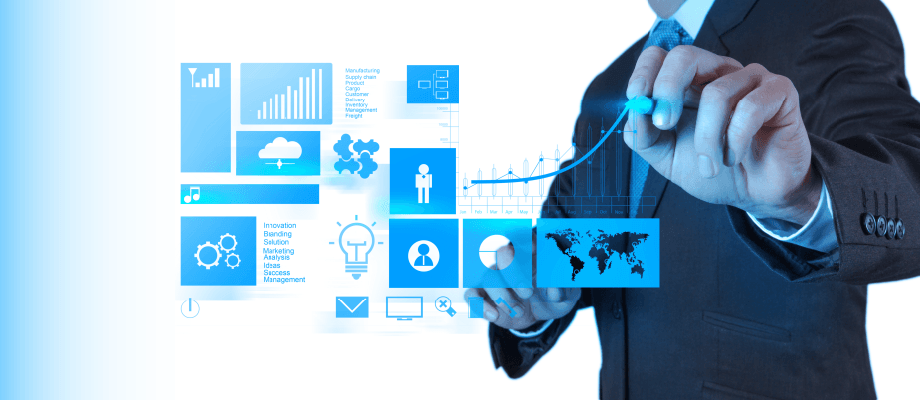Table of Contents
Your company is growing like weeds and facing tremendously high shipping costs. Return and late shipments are a problem, as well as the sales team shipping everything by air. You are trying to get his hands around this but don’t have a sound accounting system to track historical shipment data.
Without this useful data, he can’t visualize why his shipping costs are rising. With multiple carriers for small parcel, LTL, Truckload, Ocean, and Air, it isn’t easy to have consistent data for all shipments.
Parcel and freight shipment volumes are skyrocketing. A lot of errors appear on invoices. Costs aren’t matching pricing agreements with carriers. Your team can make spot checks on 1 out of 10 invoices, but can’t check them manually. Issues with lost packages, damaged shipments, the imbalance between what should or shouldn’t be shipped by Air or Ground. The team is covering many roles, but they’re overlooking invoices causing substantial profit loss.
You and the supply chain manager need a solution that will solve this problem, identify if they are being charged correctly, and when errors do present themselves, have a way to challenge these, and request refunds. They need reporting tools that provide more visibility of historical shipments to make strategic business decisions as their company grows.
The supply chain manager believes there are additional areas of opportunity for savings, but he doesn’t have any information to back up those ideas. He needs a solution and partner to help validate those opportunities while identifying other areas he hasn’t thought of.
Key Features of a Freight Audit and Pay Software
Did you notice similar problems that have your company in the story above? We know that All these issues can be solved by implementing freight auditing and payment software. Let’s oversee what functions to look for in freight auditing and payment software:
- Create Payments. Most shippers prefer to keep financial management under their control; that’s why they choose in-house auditing. The software should be able to save invoices during agreed terms and prepare validated invoices ready for payment by the shipper.
- General Ledger. All the components of a shipment must be dedicated to the particular department and correct category (in case of overseas transactions). The software must automatically set up General Ledger codes listed by the shipper and should be able to assign multiple codes to an item.
- Electronic Data Interchange (EDI) Capability. Paper and redundant effort are eliminated by electronic invoicing directly from the carrier’s billing department to the shipper’s computer, flowing in a standard format. Large volumes of data can be transferred and processed reliably without human intervention.
- Auto-Rating. The software must be able to audit invoices at the level of each line item, distinguishing between consolidated and single-item shipments, comparing the billed rates with the contracted rates, and adjusting review as appropriate.
- Manifest Matching. Comparing the shipper’s internal shipment details such as weight, size, special coding, etc., with the invoice details optimizes the quality of the audit.
- Reporting & Analysis. The key point of auditing is the analysis. The software should be able to provide credible reports. Trend analysis and generating graphics are essential as many other functions like check level of detail, being able to break out supplementary charges, etc. Be prepared to share your data with a customer, and a vendor, a shipping lane, and a carrier – these are crucial requirements for rate negotiations.
- Simple Integration. Any software has to work within the existing IT structure of an organization. How well can you integrate with your current systems architecture? Look for technical support from the developer in this regard.
Finally, remember the high-altitude view. Why are you getting the software? What problem is it solving? Look for features that will solve your problem. And consider the tasks handled by the software: how do they fit within your current systems?
Top 5 Digital Solutions for Freight Audit and Payment
One of the biggest challenges for all supply chain participants is gaining financial clarity into the supply chain. Freight shipments often have unforeseen costs. These challenges are exasperated by a tedious, manual, paper-based auditing and reconciliation process, which is often inaccurate and expensive.
Some of the factors that can lead to unexpected costs and charges include layovers additional shipment equipment, delays, fuel surcharges, redelivery, and lack of drivers. These challenges are exasperated by a tedious manual, paper-based auditing, and reconciliation process, which is often inaccurate and expensive. The more challenges you face more careful you should be choosing the software for your company. We made a list of freight auditing and payment software with a short description:
- Blum provides visibility across the physical and financial supply chains enabling shippers and LSPs to manage costs across every move, every mode, and every mile. Users can electronically store contracts, compare rate and route options, accurately manage URLs, and access digital checkpoints providers of transportation, including. Carriers can access all from a central location and have the ability to generate invoices making pay cycles shorter with complete visibility automatically. Blum users receive alerts and can approve or dispute any changes in real-time before invoice formation, encouraging more transparent and streamlining business processes across the supply chain.
- MCG’s cloud-based Intelligent Invoice Auditing software. It provides a global audit of all modes of transportation while giving the team extensive data analytics and reporting for shipment company overall shipments and spending. The shipment company reveals substantial savings through the audit process and identified other areas of opportunity through the reporting for further savings.
- Master log 4PL Solutions. Innovative Solution and Technology for companies and carriers to simplify the process and eliminate Freight Audit. Our scope with this new procedure and technology is to create an End-To-End process for Freight data and billing, without waiting for the audit process. Everything can be interfaced (EDI) with the companies’ and carriers’ systems regardless of their IT capabilities.
Our procedures and technologies are affordable and can be easily adapt to all types and sizes of businesses. Including Masterlog’s Freight Cost Management to your business will reduce administrative costs and waste of time by eliminating Freight Audit either internally or externally. - eFreight Suite is the most comprehensive end-to-end ERP solution for the Freight and Logistics Industry. It’s robust, user-friendly, and a web-based system that allows companies to manage their costs more effectively. It combined industry best practices in software development with in-depth domain knowledge and offer EDI capabilities with the Ports, Airlines, Shipping Lines, and Customs in multiple countries.
- Fortigo. A cloud-based freight audit software that improves profitability through optimizing audits with closed-loop logistics processes as minimizing ship-to-order time and eliminating duplicate invoices. The app allows shippers to carry out mock audits of shipment bills and generates reports on how they are spending capital. The audit reports can be used for analyzing freight transactions – shipment delivery, for example.
Why do you need Freight Audit and Payment solutions?
Within the world of global trade and manufacturing, Freight Audit and Payment gives a competitive advantage to a company with global and/or complex logistical operations. It became possible with cost reduction and savings, process optimization and streamlining, data visibility, etc.
if the competition is using innovative software, they have the benefit of a larger resource pool, more efficient logistical operations, and strict control of their shipping, which influences to successful trade and the ability of accurate decision making.
In the modern world, dominant global giants in tech, manufacturing, and trade are already Freight Audit and Payment software needs not only to reduce logistical budgets but also to be able to predict possible issues, free up strategic experts and departments for maximum business output and truly understand the state and power of their logistical flow.
Automatization via software can empower your logistics and bring it to a new level. As logistical operations are the lifelines of any physical trade-oriented (or similar) business, it is impossible to overestimate the need for efficient and accurate billing, data analysis, and process optimization.





